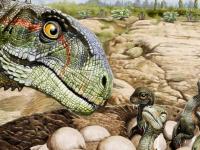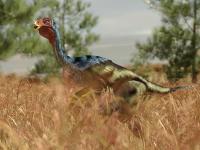Dinosaur Discovery 'A Dream Come True' for U of R Physics Professor

Dinosaur skin allows for a world first in comparing specimen to modern animals.
Mauricio Barbi had three loves as a child: space, stars and dinosaurs.
Now, he's a University of Regina professor who studies high energy particle physics but that hasn't stopped him from pursuing his passion for paleontology — or from being part of a 72-million-year-old dinosaur discovery that's broken new ground in the study of evolution.
"Since I was a little kid, I never wanted to be anything else; study the universe, study the planet and dinosaurs, of course," he told CBC Saskatchewan's Morning Edition.
In 2012, his volunteer efforts with the Royal Saskatchewan Museum led him to trek through the Alberta Badlands alongside famed paleontologists Phil Currie and Phil Bell, the latter who had recently found a well-preserved hadrosaur.
During the excavation, a piece of three-dimensional skin came loose from the site — a discovery that had Barbi jumping out of his own skin.

"When we found that skin, that was not only out of this planet, it was out of this universe," he said.
It gave him the hope that research into this piece of well-preserved skin could shed light on the pigmentation of the dinosaur.
But the skin would in fact have a more exciting secret to yield. Closer analysis using the powerful microscope at the Canadian Light Source synchrotron in Saskatoon would show semi-circle cell structures.
The team speculated that a combination of fortunate circumstances led to the incredible skin preservation. The animal may have died and been submerged partially underwater, which slowed the rate of decay, while the presence of mud and iron may have also helped preserve the tissue.
This skin has given further insight into evolution beyond previously discovered bones and imprints of dinosaurs, said Barbi.
"With this, it gives another layer of information because now we have not only soft tissue preservation but the micro structure for the soft tissues, so you can try to connect those animals to current animals and compare them," he said.
The CLS allowed them to compare the skin of a dinosaur with modern animals, which found that the hadrosaur from the Late Cretaceous period in Alberta had skin that very closely resembles the skin of a modern crocodile.
For Barbi, it's the kind of momentous discovery he always hoped to make — one that delights the child in him that always loved dinosaurs.
"For me, it's more than a dream come true."
-with files from CBC Saskatchewan's The Morning Edition
Source: www.cbc.ca/








